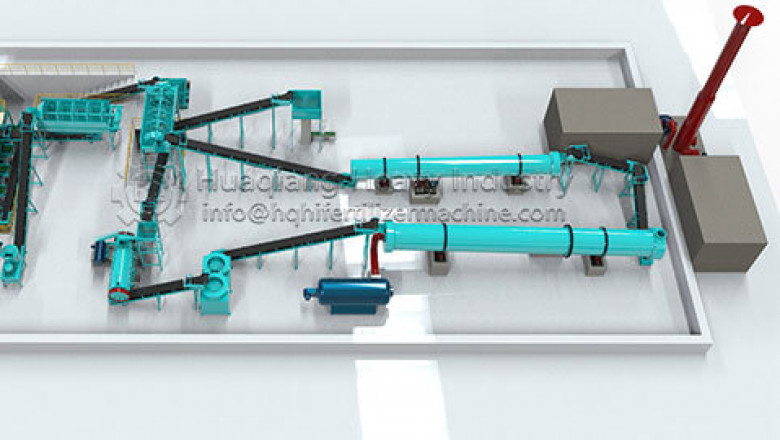views

Simple treatment scheme of duck manure organic fertilizer in organic fertilizer production line
Simple treatment scheme of duck manure organic fertilizer in organic fertilizer production line
1. Mix duck dung, grass, flowers and leaves with water, put them into non-toxic plastic bags after removing impurities, add water for fermentation or pile them up, and cover them with plastic tightly for fermentation. When the fermentation temperature reaches 45 ℃, it can be spread in the sun to cool down. The fermentation process is solved when the temperature is constant. It can be used after fermentation
2. The raw materials of the organic fertilizer production line (taking the production of 1 ton of organic fertilizer as an example): 1.8 tons of human manure or livestock manure, 0.3 tons of straw powder or leaf powder, 2.5 kg of corn flour, 1 kg of bacteria rapid fermentation agent. Human manure, animal manure + leaves or straw powder + corn flour + bacteria → mixing → composting → drying.
3. First control the moisture content of the mixed raw materials at about 40% - 50%, then mix the bacteria with jade water surface, sprinkle on the surface of the mixed fertilizer, and manually and evenly load the raw materials into the mixer for crushing and mixing. When the fertilizer is stirred and crushed, its water content should be controlled. Generally, the water content should not exceed 40% - 45%. Too much or too little water will affect the quality of fermentation, so it is better to knead the fat by hand, see water in the hand seam, but do not drip, let go and fall. Stir evenly, thoroughly and fluffy without leaving any lumps.
4. The mixed ingredients are piled into strips 1.5-2m wide and 0.3-0.4m high, covered with straw curtain or sack pieces for aerobic fermentation. The compost temperature of organic fertilizer production line generally rises to 50 ℃ within 24 hours ° C. The temperature can rise to 60-70 ℃ within 48 hours ° C. During fermentation, such high temperature can kill all pathogenic bacteria, insect eggs, grass seeds, etc. According to the fertilizer experiment, it takes 6 days to compost in spring, summer and autumn, and 7 days in winter. When the fertilizer is covered with white hyphae, that is to say, all of them are rotten, and a little drying and sieving can be done.












